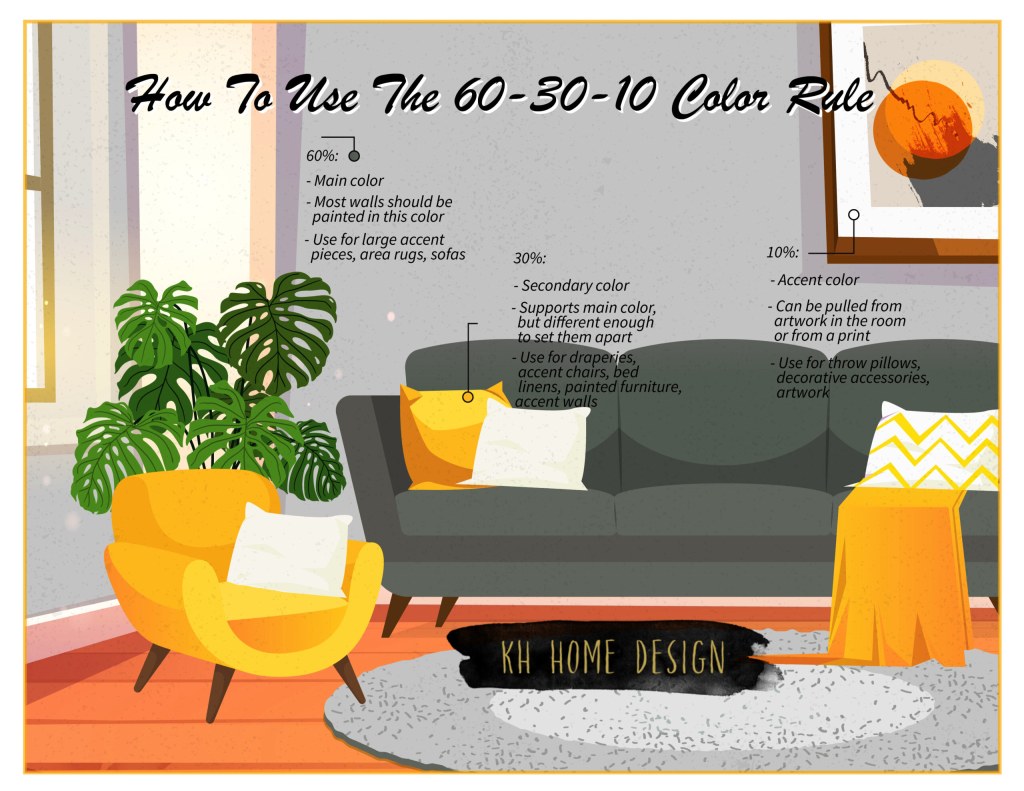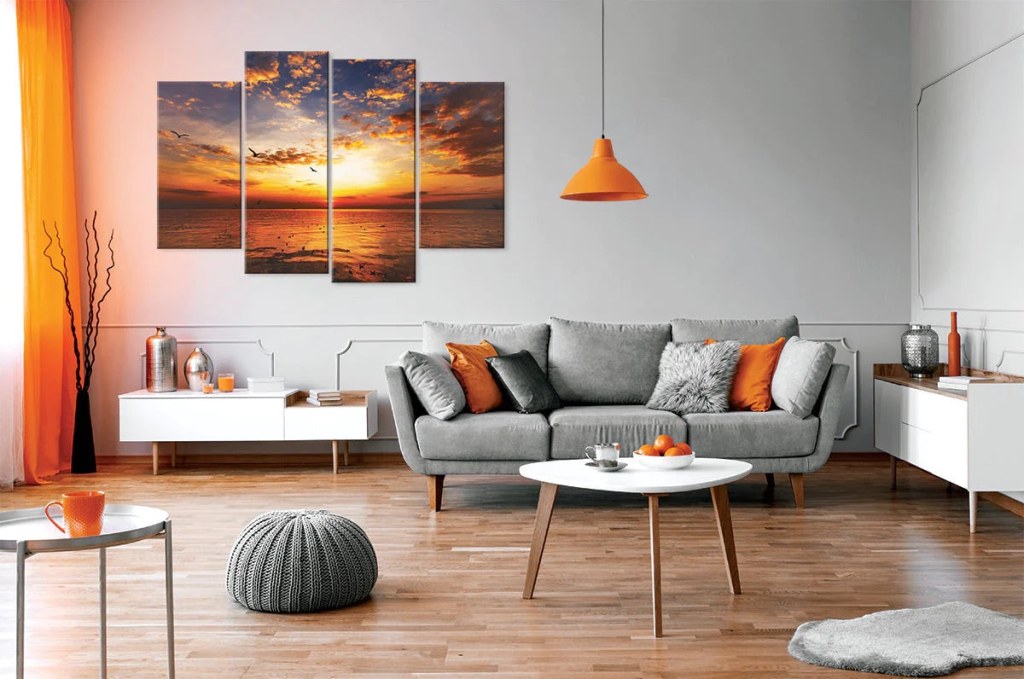Interior Design 60 30 10: Creating Harmonious Spaces
Introduction
Hello Readers,
Welcome to our article on interior design 60 30 10, a concept that has gained popularity in recent years. In this article, we will explore the principles behind this design approach and how it can transform your living spaces. If you are looking to create a harmonious and balanced interior, then keep reading!

Image Source: designsbykh.com
Interior design 60 30 10 refers to the concept of using three different colors in specific proportions to create a visually pleasing and cohesive space. The idea is to use 60% of a dominant color, 30% of a secondary color, and 10% of an accent color. This method allows for a balanced distribution of colors, resulting in a harmonious and aesthetically pleasing environment.
Whether you are a homeowner, an interior designer, or simply someone interested in home décor, understanding the principles of interior design 60 30 10 can greatly enhance your ability to create visually stunning spaces.
Now, let’s dive deeper into the world of interior design 60 30 10 and explore its various aspects.
The Basics of Interior Design 60 30 10: What, Who, When, Where, Why, and How

Image Source: elephantstock.com
What is interior design 60 30 10? Interior design 60 30 10 is a color theory concept that involves using three different colors in specific proportions to create a balanced and visually appealing space. It is a method used by interior designers and homeowners alike to create harmonious environments.
Who can benefit from interior design 60 30 10? Anyone interested in creating visually stunning spaces can benefit from interior design 60 30 10. Whether you are a homeowner, a professional interior designer, or someone passionate about home décor, this concept can greatly enhance your ability to create aesthetically pleasing environments.
When should you consider using interior design 60 30 10? Interior design 60 30 10 can be applied to any space, whether it is a residential or commercial setting. It is particularly useful when you want to create a balanced and visually appealing interior that promotes harmony and tranquility.
Where can you apply interior design 60 30 10? Interior design 60 30 10 can be applied to any room in your home or office. From living rooms to bedrooms, kitchens to bathrooms, this concept can transform any space into a visually stunning environment.
Why is interior design 60 30 10 important? Interior design 60 30 10 is important because it allows for a balanced distribution of colors, resulting in a harmonious and visually appealing space. By following this concept, you can create environments that promote relaxation and well-being.
How do you implement interior design 60 30 10? To implement interior design 60 30 10, you need to choose a dominant color, a secondary color, and an accent color. The dominant color should make up 60% of the space, the secondary color should make up 30%, and the accent color should make up 10%. By carefully selecting and proportioning these colors, you can create a visually stunning and harmonious interior.
Advantages and Disadvantages of Interior Design 60 30 10
Like any design concept, interior design 60 30 10 has its own set of advantages and disadvantages. Let’s take a closer look at both:
Advantages of Interior Design 60 30 10
1. Visual harmony: Interior design 60 30 10 ensures a visually harmonious space by proportioning colors effectively.
2. Aesthetically pleasing: By following this concept, you can create visually stunning interiors that are pleasing to the eye.
3. Balancing colors: This design approach allows for a balanced distribution of colors, creating a sense of calm and tranquility.
4. Versatility: Interior design 60 30 10 can be applied to any space, making it a versatile concept that can be used in various settings.
5. Enhances mood: The right combination of colors can greatly influence mood and emotions, and interior design 60 30 10 can help create a positive and uplifting ambiance.
Disadvantages of Interior Design 60 30 10
1. Limiting color choices: Following the 60 30 10 rule may limit your color choices, which may not suit everyone’s personal preferences.
2. Requires color knowledge: Implementing this design concept requires a good understanding of color theory and how different colors interact with each other.
3. Potential for monotony: Strictly following the 60 30 10 rule may result in a monotonous color scheme if not executed thoughtfully.
4. Limited to interiors: Interior design 60 30 10 is primarily focused on creating harmonious indoor spaces and may not be applicable to outdoor areas.
5. Personal taste: Ultimately, interior design is subjective, and personal taste plays a significant role. While interior design 60 30 10 provides guidelines, it may not suit everyone’s individual preferences.
Frequently Asked Questions (FAQs)
1. Q: Can I use more than three colors in interior design 60 30 10?
A: The concept of interior design 60 30 10 revolves around using three colors in specific proportions. While you can experiment with additional colors, it is important to maintain the overall balance and harmony of the space.
2. Q: Can I apply the 60 30 10 rule to furniture and accessories?
A: The 60 30 10 rule primarily applies to the color scheme of a space. While it can guide the selection of furniture and accessories, it is not limited to them.
3. Q: How do I choose the dominant, secondary, and accent colors?
A: When selecting colors, consider the overall mood and ambiance you want to create. The dominant color should be the main color that defines the space, the secondary color should complement it, and the accent color should add a pop of visual interest.
4. Q: Is interior design 60 30 10 suitable for small spaces?
A: Yes, interior design 60 30 10 can work well in small spaces. By utilizing the right proportions and colors, you can create an illusion of spaciousness and enhance the overall aesthetic of the room.
5. Q: Can I use interior design 60 30 10 for commercial spaces?
A: Absolutely! Interior design 60 30 10 can be applied to commercial spaces such as offices, restaurants, and retail stores. It can help create a visually pleasing and inviting environment for both customers and employees.
Conclusion
In conclusion, interior design 60 30 10 offers a systematic approach to creating harmonious and visually appealing spaces. By following the principles of this concept, you can transform any room into an oasis of tranquility and visual harmony. Whether you are a homeowner or an interior designer, incorporating the 60 30 10 rule can greatly enhance your ability to create stunning interiors.
So, why wait? Start exploring the world of interior design 60 30 10 and unleash your creativity to design spaces that inspire and uplift!
Final Remarks
Disclaimer: The information provided in this article is for educational and informational purposes only. The concepts discussed may not be suitable for every individual or situation. It is always recommended to consult with a professional interior designer or color expert before implementing any design concepts.